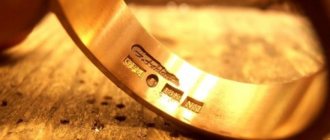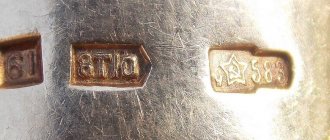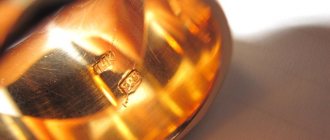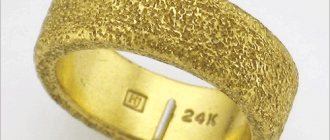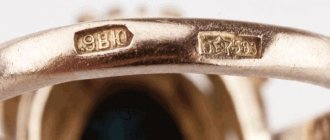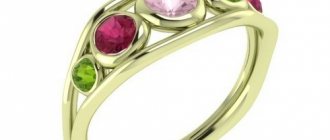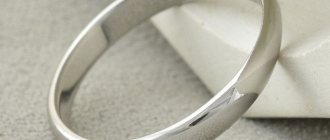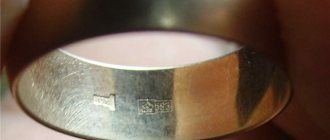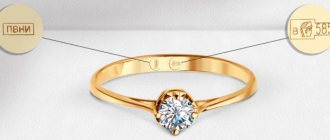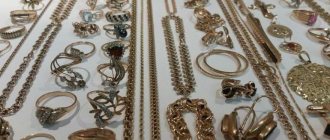Home | Links | Useful materials | Brands and modifications of the Nagan revolver
At the Tula Arms Plant (TOZ), branding was carried out as follows: on the left side of the revolver - production stamps (who produced it, when), and on the right side - test stamps (for strength, powder test "P" (on the barrel), after shooting on accuracy of fire "K" (on the frame under the drum), selection committee "double-headed eagle", "PM" in a circle or others (above the handle in the corner). Around the front sight - everything is the same - the TOZ sign and the marks of the technical process - the personal marks of the masters .
Soviet Nagans before 1931 for at least a year were almost an exact repetition of the tsarist ones. Apart from avoiding oak on the cheeks. But then the nature of the processing of the butt plate of the handle changed, the size of the fullers decreased, and so on. After 1931, the butt plate became more “sharp”.
Until the early 30s, you could come across a completely blue trigger, except for the pawl, screw and connecting rod spring, as well as the striker and its pin.
Modernization of the revolver began in 1929.
In order to save metal, they began to make a ramrod in two parts (the head was welded to the ramrod by electric welding) and made the front sight truncated.
Modern branding in Russia
All modern jewelry and other products made in Russia made of gold, silver, platinum, and palladium must comply with the hallmarks determined by Decree of the Government of the Russian Federation No. 643 and be branded with the state hallmark.
Assay table for gold since 1952
Silver hallmark table since 1952
Assay table for platinum since 1952
Products made from precious metals using various types of artistic processing, with or without inserts of precious, semi-precious, ornamental and colored stones, other materials of natural or artificial origin are subject to branding.
The following samples exist in Russia:
- platinum 950 (nine hundred and fiftieth)
- platinum 900 (nine hundredth)
- platinum 850 (eight hundred and fiftieth)
- gold 999 (nine hundred ninety-nine)
- gold 958 (nine hundred fifty-eighth)
- gold 750 (seven hundred and fiftieth)
- gold 585 (five hundred eighty-fifth)
- gold 500 (five hundredth)
- gold 375 (three hundred seventy-fifth)
- silver 999 (nine hundred ninety-nine)
- silver 960 (nine hundred and sixtieth)
- silver 925 (nine hundred twenty-fifth)
- silver 875 (eight hundred seventy-fifth)
- silver 830 (eight hundred and thirtieth)
- silver 800 (eight hundredth)
- palladium 850 (eight hundred and fiftieth)
- palladium 500 (five hundredth).
999 gold is used to make bars that are used as gold and foreign exchange reserves. The most common hallmarks for making jewelry are 585 and 750 for gold and platinum. In dentistry, 375 gold is mainly used.
Silver alloys subject to hallmarking
They put a mark on many products made of precious metals. The standard mark marks all jewelry that weighs more than three grams. The following items are subject to mandatory branding:
- Having historical value.
- Of archaeological significance.
- Ingots of imported and domestic production.
- Nuggets.
- Silver leaf.
Despite the fact that most of the historical treasures are in the museum, archaeologists find new parts made of precious metals every day. Before transferring them to museum institutions for storage, they are checked and branded with a special sign. Even if the product contains a mixture of alloys, it must have a sample on it. For example: a ring made of silver and gold: two stamps. Any items made of precious metals that are created for scientific or industrial needs are not branded. Such things are subject to special consideration. Such records can be found in journals of laboratories, medical and other professional institutions.
If a person sees a silver item, but cannot detect a hallmark on it, then most likely this item was made by a private craftsman or does not belong to precious alloys. When products are sealed, each item is indicated in a special registration book. The authenticity of the sample can be confirmed or refuted by any jeweler with a magnifying glass at hand.
What is a stamp
Special state marks, which are confirmed by the sample of the gold alloy in the jewelry, are called hallmarks.
All jewelry made from precious metals must be tested and branded before it goes on display in a store and then to the end consumer. By this sign, the buyer understands what metal the jewelry is made of, what grade it is, by whom, when and where it was made.
In almost all countries, branding is a mandatory procedure. In Russia, this is done by the State Assay Chamber. The process is controlled by the Federal Assay Supervision. The imprint is applied according to a single government-approved sample after the product has been tested for compliance with the sample.
We can say that the state mark is a guarantee of the quality of the alloy. The jewelry has been checked by specialists and does contain the specified percentage of gold.
Where is it located and what does it look like
According to the rules adopted in jewelry production, branding should not spoil the appearance of the jewelry. The state sample confirmation mark is placed according to the following rules:
- In an inconspicuous place - on the back of rings, clasps, carabiners;
- Several parts of one product are tested separately;
- On interior items and products of artistic value, an additional plate of the same alloy is attached for stamping.
Rings have a hallmark mark on the back or under the mounts for precious stones, chains and bracelets - on clasps or nearby links, pendants - on holders.
The appearance of the Russian mark has changed several times. In Soviet times, a five-pointed star with a hammer and sickle was applied. The modern brand is the profile of a woman wearing a kokoshnik. Each country develops its own designs for hallmarking alloys of various precious metals.
What is a name tag and how is it different from a brand?
If the mark is a sign of the state certificate of the alloy sample, then the nameplate is the manufacturer’s imprint. It contains the following information:
- individual manufacturer code;
- year of manufacture of the product;
- inspection code of the State Assay Service to which the production belongs (factory or private jeweler).
All this information is encrypted in letters. A Russian-made gold product must have both a name tag and a stamp. The manufacturer's mark has the shape of a rectangle. Next to it is the state stamp.
What is a name tag
Let's look at what a name tag is. Sometimes on jewelry you can find a master's mark, which is also called a name mark, but it does not prove quality.
The name tag refers more to the personal signature of some jeweler and the company that produced the item from the precious metal. If decrypted, it should contain additional information about it.
For an inexperienced buyer, the information included in the name plate will mean little. Only specialists or other jewelers will be able to tell with one glance at the personalized seal who made the jewelry, where and in what year. Since 1986, all jewelry manufacturers have been required to label them themselves.
After a year, the old name book must be destroyed. Its re-registration is carried out annually and differs from the previous one in the code of the year of manufacture. Many workshops can, at the customer’s request, put any inscription on gold jewelry. This could be either a word that is important to him or a date of birth or wedding. This is especially true for people who are planning to get married.
Methods of stamping gold
The branding method depends on the size and complexity of the finished product. There are three ways to apply markings:
- Mechanical. The oldest and most frequently used (up to 80%) method. The product is fixed and an impression is made using a hammer blow. Mechanical branding is simple and convenient, but on small items there is a risk of deformation.
- Electrospark. Used since the 70s of the XX century. The mark on the ring and other jewelry is burned out with an electric spark. Well suited for branding fragile, hollow products. The application surface must be perfectly smooth, without defects, pores, or roughness. The print is clear and wear-resistant.
- Laser. A complex, materially expensive method. The marking is applied using a laser machine. The print is small, unnoticeable, but clear and easy to read. The method is suitable for any surface - concave, flat, convex. The only requirement is that it must be polished. Laser stamps are more susceptible to wear and tear than others.
Types of stamps
The shape of the imprint depends on the type of precious metal. On gold jewelry the mark has the shape of a spatula, on silver jewelry it is an oval cut off on the sides, and on platinum jewelry it is an elongated octagon. The print looks different in each country. Let me remind you that all products sold in the Russian Federation are subject to hallmarking at the local Assay Office. This means that I will talk about the types of Russian stamps.
Currently, the print depicts the profile of a girl in a kokoshnik. A similar design was on the stamps of the Russian Empire at the end of the 19th and beginning of the 20th centuries. Until 1896, the design looked like a “tee” in the form of the intersection of the hallmark numbers, year of manufacture, coat of arms, and letters. Soviet stamps depicted the head of a worker with a hammer (since 1927), a five-pointed star with a hammer and sickle (since 1958).
Features of revolver parts
General Features
Nagant revolver, produced by the Tula Arms Factory from 1895 to 1911
The front sight has a semicircular shape
On the right side of the frame there is a pin for fixing the door. The door, accordingly, has a slot
Revolver produced in 1912-1920
All design features are the same. They differ only in the brands.
Revolvers produced in 1921-1929.
In Soviet Russia, it was decided to produce only a self-cocking modification of the revolver, and the design of the Nagans of these years is of the same type as the previously produced officer models.
It should be noted that for some time revolvers with a rectangular front sight were produced, but almost immediately they returned to the semicircular one
Nagant revolver produced in 1930-1941
In the early 30s of the 20th century, the revolver underwent some modernization, which affected sighting devices:
- The sight slot became semicircular instead of triangular.
- They removed the pin under the door on the right side of the frame, and stopped making a slot on the door itself (although due to the huge backlog of doors with slots themselves, they continued to be installed)
- The corrugation on the revolver trigger has been changed (previously it was made in the form of a tooth on the upper, smooth part of the trigger, and now it is a rectangle)
- We changed the front sight, now it has become truncated.
Revolver produced in 1942-1945
Due to the evacuation of the plant to the Urals in 1941, production was curtailed.
At the same time, to reduce the cost of production, plastic handle cheeks began to be manufactured and installed instead of wooden ones.
Factories in Tula and Izhevsk officially produced revolvers until 1945 inclusive, although there is information that there are revolvers with marks of 1947 and even 1950. Most likely, these are assembled from the residual stock of parts.
In the 1960s, the revolver underwent another modernization, during which on almost all revolvers produced before 1930, the old semicircular front sight was replaced with a new truncated one, and the grip cheeks were also replaced from half-rotten wooden ones to plastic ones. All stored non-self-cocking revolvers produced before 1920 were converted into self-cocking ones.
Trigger guard
“Royal” trigger guards came with a number in the front part above the hammer. The serial number was placed on the bracket until 1914. There are no metal tides along the contour (the tide in the place of the lower eyelet of fastening the bracket to the frame axis (the transition at an angle from the 'straight' part to the 'eyelet' was until 1942. Then, during the Second World War, in order to speed up the technological process, the transition to the 'eyelet' was made smooth with fillet.
Drum
There is a mark on the front end of the drum. So, before 1938 this mark consisted of only four numbers, and after 1938 they began to add letters. (P, M...)
Drum door
After the modernization of 1930, doors, to simplify the technological process, began to be made without cutouts, respectively, for the purpose of unification (simplification of the technical process), the protrusion (stump) was no longer made on the frames, but on old samples released earlier, to simplify replacement in case of door wear, the ledge was removed. The door tooth serves to additionally secure the drum from turning in the opposite direction; with frequent use, it sometimes simply ground off, since when the drum is turned, it slides along it and falls into the groove when fixed. The lower tooth of the door also serves to fix the drum for unloading/loading the revolver when the door is open, and also wore out with frequent use.
Trigger
Until the end of the 20s, the corrugation on the trigger was in the form of a tooth (like on the Kremlin wall), and then they began to make it rectangular. I don’t know exactly when the corrugation was changed from a tooth to a rectangular one, probably before 1928.
Trunk
On the thickening in front of the ramrod tube “P” a powder test is carried out.
Front sight
The front sight is almost triangular in cross section (crest width 1.25mm), i.e. made before 1928 During the overhaul after 1928, it was sawn to the new adopted profile. Front sights manufactured after 1930 had a “Dynamo” shape adopted on May 7, 1930 by the NTK Commission of the Artillery Directorate with a truncated rear part with a cross section: trapezoid + rectangular comb 2 mm wide, and on all revolvers produced after the 30s the upper edge of the front sight was - flat.
In the future, it was allowed to have revolvers with two types of front sights.
The truncated front sight was finally approved in 1938. Later, the rear sight slot was changed to a semicircular one.
Until 1929, revolvers had a semicircular front sight. The rear sight slot was triangular.
Ramrod tube
The half-erased letter “R” is a powder test test at the Nagant plant in Belgium, which was installed only at the L. Nagant plant in Belgium in 1896-1898. It is known that in 1898, by decision of the Armory Department of the GAU, spare parts for 20,000 revolvers were ordered in Belgium.
Ramrod
At the end of the head there is a “circle with an inscribed triangle and an arrow inside” - the mark of the Izhevsk plant 1943-1945.
Testing systems
The most popular are metric and carat. I will talk about them and other existing sample measurement systems below. Their correspondence table looks like this:
| Metric | Carat | Zolotnikovaya | Lotovaya |
| 375 | 9 | 36 | 6 |
| 500 | 12 | 48 | 8 |
| 583, 585 | 14 | 56 | 9 |
| 750 | 18 | 72 | 12 |
| 1000 | 24 | 96 | 16 |
Carat
Used in the USA and European countries. The karat designation shows how many parts of pure gold are in 24 parts of the alloy. To convert a metric value to a carat value, you need to multiply it by 0.024.
Metric
The most popular system. Used in most countries of the world, including Russia since 1927. Shows how much gold is contained in 1000 units of the alloy.
Zolotnikovaya
Branding using the spool system was used in the Russian Empire, then in the Soviet Union until 1927. It is not currently used. The measurement was based on a pound consisting of 96 spools. Accordingly, the spool test shows how many units of gold contain 96 units of the alloy.
Lotovaya
This testing system is also from the past. It was used in the Middle Ages by Western European peoples - Celts, Germans, Scandinavians. Previously, the mass of the precious metal was calculated in marks, consisting of 16 lots. This test shows how many lots of gold are in one brand of alloy.
Types of hallmarks on silver
Over the entire era of the stamp, there are several dozen impressions. They appeared at one time or another and were not all included in the official marking table. Some positions have survived to this day, but the main part has sunk into history. Now you can find sample No. 875, and the alloy in composition and characteristics is identical to that which was branded under number 84. This is due to the fact that sample 84 belongs to the spool system, and 875 to the metric system, which was created in 1927. Alloy 925 is also popular in the modern world.
The stamp itself can be made in the form of an oval, the sides of which are slightly cut off. There should always be a letter at the bottom of the stamp. Using it you can find out in which region or locality the product was tested. Since ancient times, branding has been handled by a separate department, which simultaneously evaluates the item based on chemical analysis of individual components. This procedure can be done manually, during jewelry making, or using a special device. Brands are written with the following symbols: “A”, “B”, “C”, “D”, “D”, “E”, “F”, “Z”, where:
- A and B are a round print with a woman’s head, and the sample is located behind the circle, near the image.
- C and D – a round print with a five-pointed star, with a hammer and sickle inside, and the sample is located behind the circle, near the image. This mark dates back to the USSR era.
- “D”, “E”, “F”, “Z” - do not have independent meaning. It is applied as an additional stamp. Without a standard stamp, such a marking cannot confirm that the item is created from silver metal.
In modern jewelry, only the meanings of “D” and “E” are used. The first letter is depicted on precious things, enclosed in a rectangle, the ends of which are slightly rounded. The letter designation "E" is used extremely rarely. It is placed on products that do not correspond to the declared sample. Again, this is done in the approbation department, because each metal unit must undergo appropriate testing.
In modern jewelry, only the values of “D” and “E” are used.
It should be noted that the letter “B” is placed on some items after production. It may mean that the products will be exported abroad or, on the contrary, have arrived in Russia. Without this sign, the goods simply will not be allowed through the customs zone. In this print, instead of a woman wearing a kokoshnik, a sea vessel is depicted. If a person comes across jewelry with such a stamp, it means that it was either made abroad or came from there.
Many jewelry factories create their own stamps, but the presence of name marks does not replace the main stamp, which confirms the composition of the alloy by a competent department. Only those companies that do not claim to confirm individual components of the product can make do with a personal imprint. This is what workshops do that produce expensive jewelry and give it a presentable appearance with silver plating. There are also so-called “holiday” or “temporary” stamps:
- In 1967, an astronaut was present in the oval for 60 days. This seal was made for the 50th anniversary of the October Revolution. Many antique lovers keep silver coins with this sign.
- Until 1994, jewelry workshops that created church paraphernalia from silver could only brand it with the letter “D.” Now the church again wants to achieve its own distinctive sign, but so far their request is not being considered by the state.
- Also, until 1997, all medals that were issued to heroes of the Soviet Union and people for their contribution to the development of the state were subject to branding.
On a note! In the Soviet Union, it took a long time to displace German stamps. Devices with this imprint can still be found to this day, but most of them are in a museum in Moscow.
Most popular samples
Most jewelry is marked with the following hallmarks: 375, 500, 585, 750. 375 gold is considered low-grade. This product usually has a yellow or reddish tint and fades over time.
The middle group (500 and 585 samples) is the most popular. This ratio of precious metal and alloy in the alloy makes the item durable and durable without losing its external shine.
Jewelry of 750 standard is considered high quality. The alloy has a bright yellow color. Even in white gold, the golden yellow is clearly visible. The 750 alloy alloy usually contains other precious impurities - silver, palladium, platinum.
958 gold is rare. Such jewelry is soft and easy to deform. For minting coins, 900 standard is usually used.
Where do fakes come from and how to distinguish them from the original
Fake marks are applied to jewelry for the purpose of profit. Thus, inferior products are sold at a higher price. Such fraud is punishable by criminal liability.
The biggest risk of buying a fake is purchasing gold second-hand. I advise you not to chase cheapness, but to buy jewelry in large retail chains.
What other fakes are there? Under the guise of gold, unscrupulous sellers can sell jewelry with the inscription, for example, 14K and Goldmult, Gold plated, Goldfeld. This means the base metal is plated with 14k gold.
Forewarned is forearmed. Is even a basic understanding of what a mark on a gold item looks like? to reduce the risk of buying a counterfeit to a minimum. Ask the seller for a magnifying glass or take a magnifying glass with you. Feel free to carefully examine the imprint on the jewelry.
State hallmark
A heart in Stas Mikhailov’s repertoire is made of pure gold (and then only as a metaphor), but not a precious coin or a piece of jewelry. Gold and silver items are durable and strong only because they are made from alloys. True, the share of silver or gold in them often exceeds 95%. The content of precious metal in products is called breakdown. It is designated by a three-digit number, since it expresses the mass in 1000 parts of the alloy. Control over the sample is the prerogative of the state. All jewelry sold or sold in Russia - whether domestically produced or imported - is marked with an hallmark. Marking is not placed on:
- coins that have been issued;
- nuggets used in “jewelry”;
- state awards;
- gold and silver leaf;
- small cuts with precious metal on boxes, vases and other valuable items.
In Russia, a certain list of jewelry samples is valid:
375, 500, 583, 750 and 958 – for gold;
750, 800, 875, 916, 925 and 960 – silver;
500 and 850 – palladium.
The metal content must correspond to the regulated values; its share in the product cannot be less than the applied sample. In an imported product it may be slightly larger. Testing and marking are carried out by state testing inspections.
What does a hallmark mean on silver items?
You will not find such marks on silver bars, which do not have impurities. The fact is that pure precious metal is very soft and is not intended for creating jewelry or decorations. Craftsmen deliberately began to add other impurities to these metals in order to make the raw material harder and more convenient for processing. In addition, objects made of pure metal have the ability to lose shape.
These may be various components that will be indicated in the product certificate. The most popular additives were considered to be zinc, aluminum, copper and cadmium. Based on the amount of impurities in ounces, the fineness of the silver or other precious metal can be determined. The hallmarking system prescribes the percentage of pure silver in the alloy.
What does a hallmark mean on silver items?
On a note! The number of the hallmark on silver objects or jewelry means how many shares of silver are present in the product, and how many shares of additional impurity.
Deciphering the hallmark
The hallmark consists of two designations, which can be located either side by side or separately:
- the identification mark of our state is either a Soviet hammer and sickle in front and a star with five points in the background, which are still relevant as an assay mark, or a profile of a woman in a kokoshnik, turned to the right;
- sample sign.
Hallmark:
1 – Code of the State Assay Supervision Inspectorate 2 – Mark of the Assay Certificate 3 – Digital designation of the precious metal sample
Sketches of hallmarks on gold:
Sketches of an assay clamp for silver:
Repair mark
A square divided in half.
1 description option. Near the wooden overlay there is a restoration mark - a rectangle divided in half. Such terminals had been installed for several years since 1928, while revolvers (triggers, springs, sights) worn out in the battles of the imperialist and civil wars were being repaired.
Option 2 description. Small repair marks - a rectangle divided in half (read “overhaul in 1932”, when they began to remake the sighting parts), which were placed since 1932 on revolvers produced earlier, i.e. The revolver with this mark was produced before 1932.
A diamond means a complete overhaul, which in turn means a complete or partial re-sorting of parts of the revolver. During the overhaul, they could change the drum and re-barrel, but this is less likely than simply replacing a worn-out trigger. The diamond sign is less common than a rectangle divided in half. Accordingly, it means a non-standard overhaul, or a special workshop. I think this sign indicates some kind of “fine” work on the revolver.
Jewelry factory name
Jewelry must also bear the manufacturer’s marking – name plate (jewelry). He is:
- a sign identifying the jeweler (enterprise or individual entrepreneur);
- designation of the year of manufacture.
Jewelry names are updated (every new year), approved and registered by the Assay Office. The symbols of the plant's name are applied only side by side - placed in one outline. Both markings are usually visible if it is
- ring - inside;
- pendant – outside;
- earring, chain - with a lock.
The year of issue (marking) on the nameplate since 2001 is indicated by the first letter. For example, 2005 is the fifth letter of the alphabet “D”. The second letter indicates the location of the jewelry production. And the following characters are the manufacturer’s code. Following the recommendations of the Assay Office, jewelers use one or two Russian letters.
